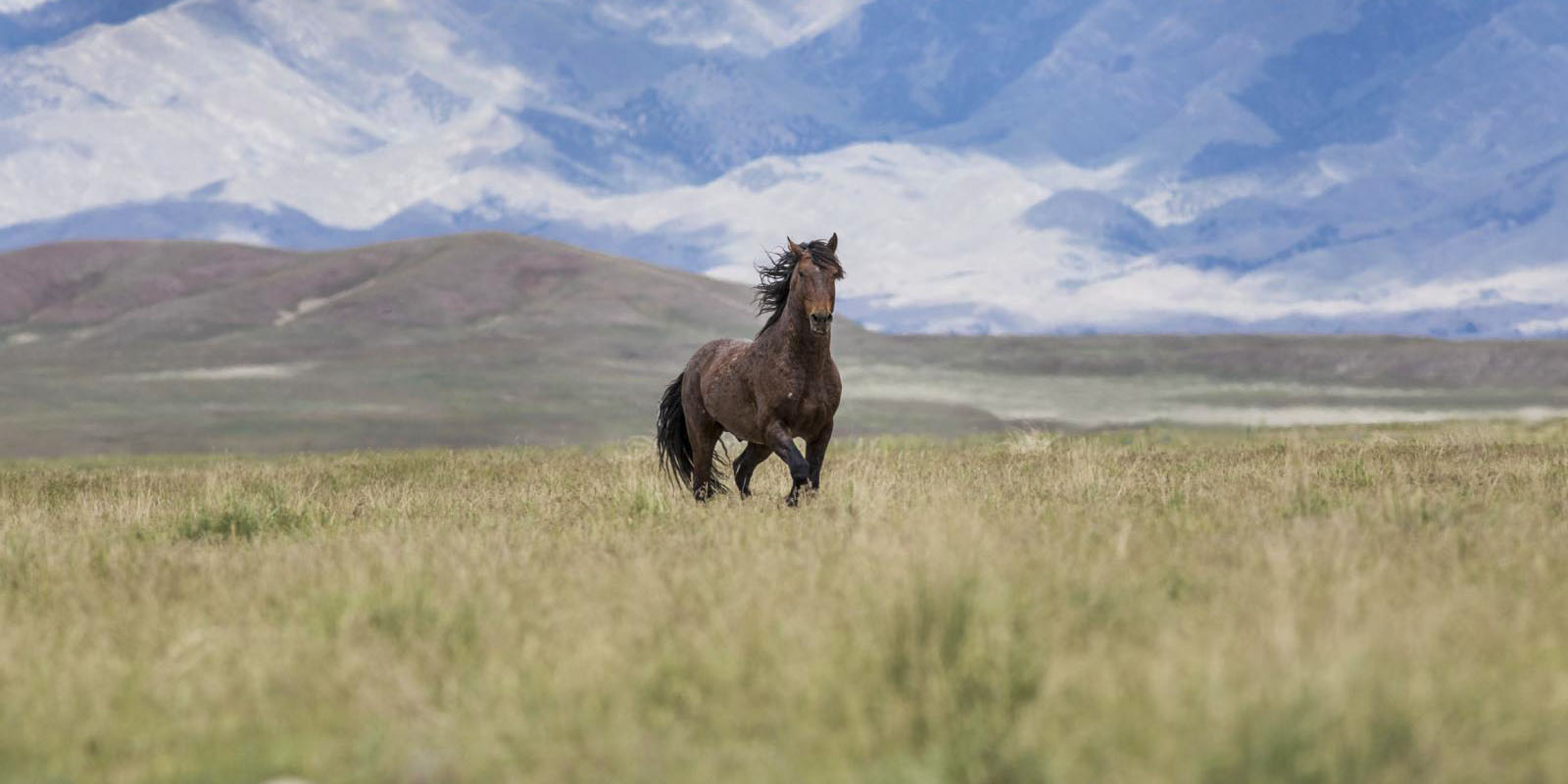By Nicole Pollack, Kilgore News Herald
January 25, 2022
Wyoming’s monthslong wild horse roundup is over.
The Bureau of Land Management (BLM) gathered a record 4,161 horses from five herd management areas in the southwestern part of the state, just below its target of about 4,300. Of those horses, 621 were returned to their home range, 3,540 were permanently removed and 37 were killed.
Operations, which began in the final two herd management areas on Jan. 6, ended last week.
Before the gather, the agency estimated the wild horse population across the Great Divide Basin, Adobe Town, Salt Wells Creek, White Mountain and Little Colorado herd management areas at 5,105.
Every herd management area has a set minimum population in accordance with the Wild and Free-Roaming Horses and Burros Act of 1971, and in those five management areas, BLM is required to maintain a combined population of at least 1,550 horses. It’s free to remove horses above that minimum, and has cited concerns about overpopulation and over-competition amid the region’s worsening drought to explain the horses’ removal.
Between Oct. 7 and Jan. 17, BLM removed as many wild horses as it legally could. Roughly 1,565 wild horses — including returned horses, of which 290 were treated with temporary fertility controls — now remain in the five herd management areas.
Horses removed from their wild range will be adopted out by the agency.
The gather is a win for the Rock Springs Grazing Association, which in 2013 attempted to force BLM to remove horses — which compete with sheep and cattle for food — from public lands bordering the federal herd management areas. In a subsequent agreement, the agency agreed to “remove all wild horses located on RSGA’s private lands, including Wyoming Checkerboard lands, with the exception of those wild horses found within the White Mountain Herd Management Area.”
BLM also agreed to eliminate the wild horse populations in the Salt Wells Creek and Divide Basin management areas, nearly halve the minimum in Adobe Town and stop reproduction in the White Mountain management area. A year ago, the Rock Springs and Rawlins field offices proposed regulatory amendments that would comply with those commitments.
But the agency didn’t wait for its changes to be approved. Instead, it did what it could under the existing rules, angering wild horse advocates.
“It’s our contention that they don’t have the legal right to eradicate these herds, and that they need to look at solutions for improving the management of horses,” Suzanne Roy, executive director of the American Wild Horse Campaign, previously told the Star-Tribune.
The American Wild Horse Campaign and other wild horse advocacy groups have long opposed the agency’s efforts to reduce populations, and have criticized the scale and methodology of the recent gather. They’re pushing instead for the agency to allow larger horse populations and manage those populations in less disruptive ways, including administering fertility controls through remote darting, which wouldn’t require capture.
In a statement last week, Roy called the gather a “reckless assault on Wyoming’s wild horses” that was “unnecessary, inhumane and a colossal waste of our tax dollars.”
According to BLM, the limitations of remotely administering fertility vaccines have led to high costs and limited efficacy, restricting their usage.
But the American Wild Horse Campaign has opposed the Rock Springs Grazing Association and sued BLM over past efforts to reduce wild horse populations, and has said it intends to challenge the proposed amendments if they are finalized.


